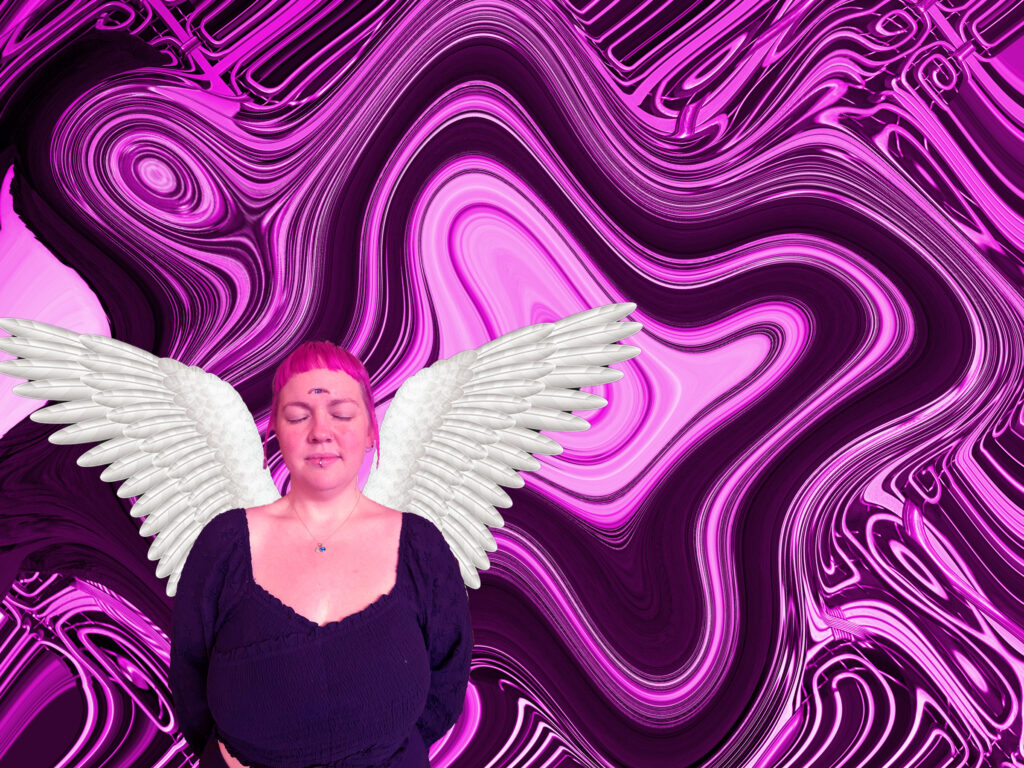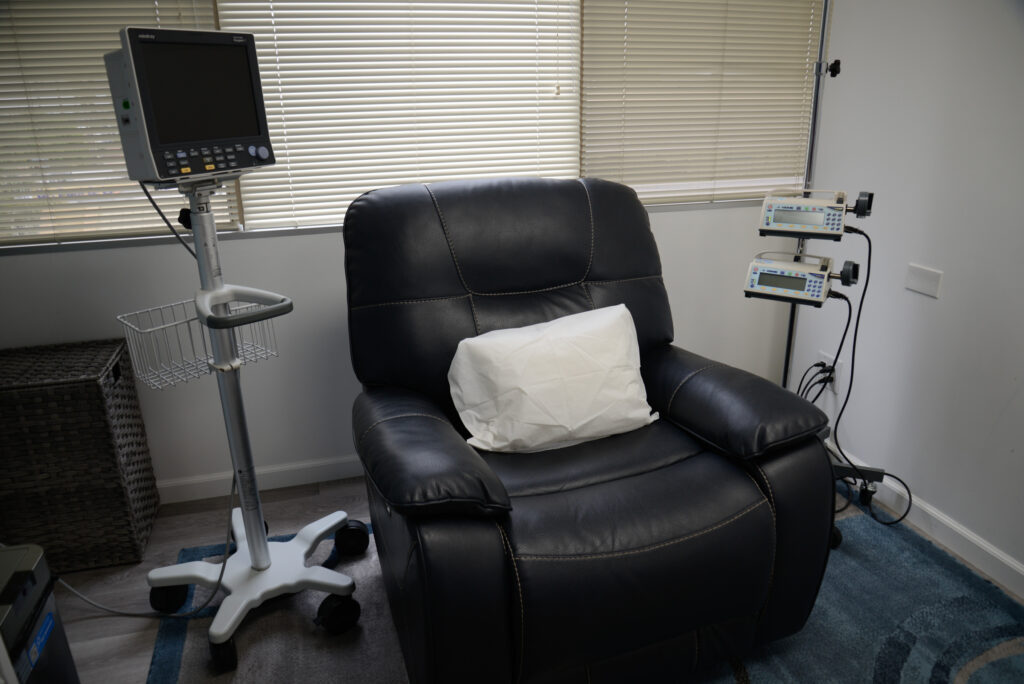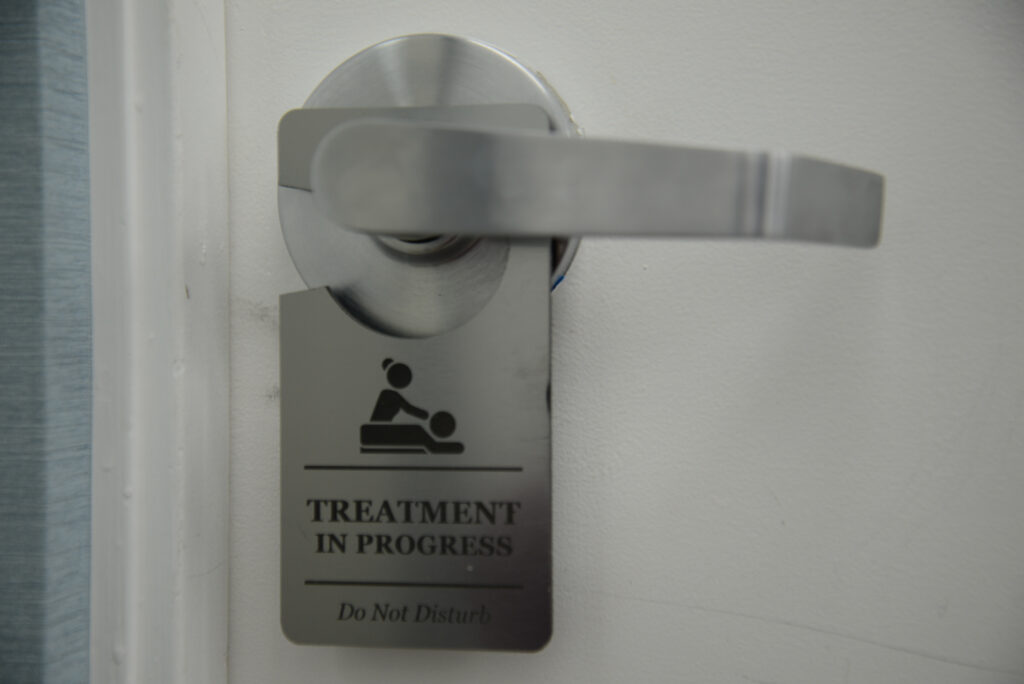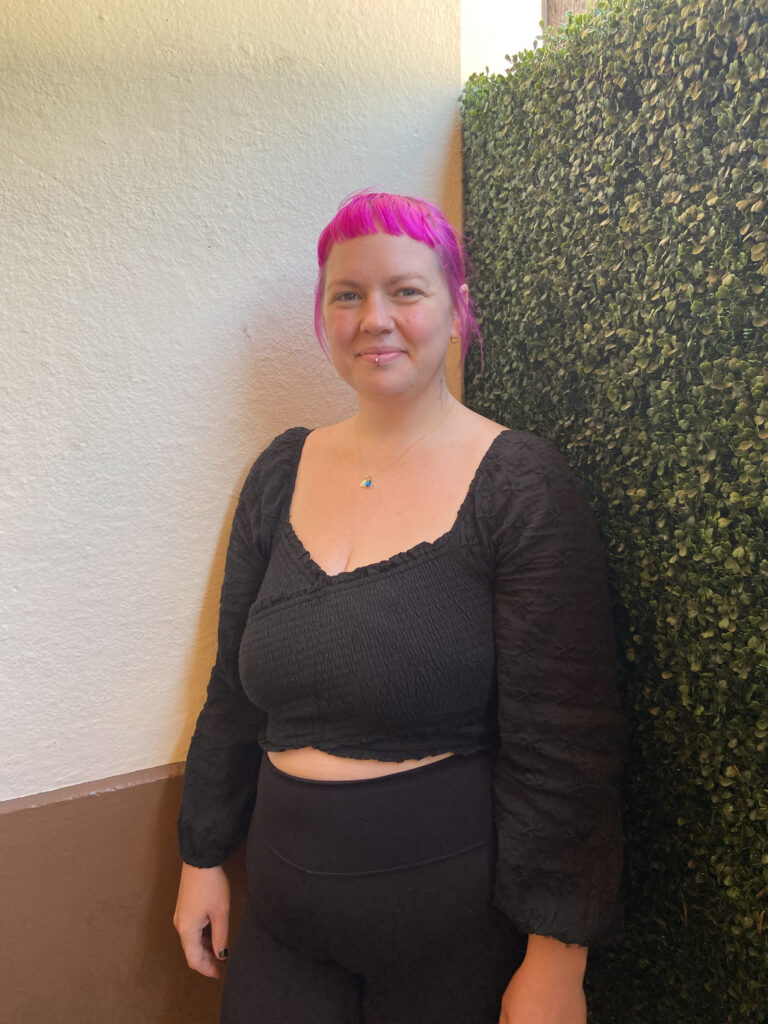
She is surrounded by shades of purple, standing in a train that rapidly moves through tunnels until it reaches a beautiful building. Inside, she is whisked away to get dressed in preparation for something important.
It doesn’t hit her until she’s walking up a staircase that she is going to meet God.
But when she is about to see the face of God, she is sent back into her physical form, sitting in the comfy chair inside a room at the clinic.
Her takeaway from this ketamine therapy session was that God was within her all along, in her connection to her body and her emotions.
Hailey “Hurricane” Reed is a professor at Western New Mexico University, and after years of trying prescription after prescription she has found success in ketamine assisted therapy for her mental health issues.
“I came away feeling really loved, and a lot of the anxiety I had about just being who I am as a person in the world seemed to dissipate, and I felt much more strength in my being,” Reed said, who has been undergoing treatment for the last couple of years.
“My emotions became much more clear to me,” she said. “It always felt like a swirling of emotions prior, and the ketamine really helped me sort through what was maybe my personal truth and what was maybe just anxiety and fear.”
The History of Ketamine
Ketamine is an anesthetic drug that was originally developed as a method to sedate animals. According to the National Library of Medicine, ketamine was developed in the 1960s as a more effective, less hallucinatory anesthetic than phencyclidine, also known as PCP.
Ketamine was then approved by the Food and Drug Administration for human consumption in 1970 and was heavily utilized in the Vietnam War. But this led to recreational use in the 1980s.
In 2000, scientists led by Dr. John Krystal at Yale University researched ketamine’s effect on depression. They found that more than half of their test subjects showed a decrease in symptoms of depression in less than 24 hours.



Left; Mayo instrument stand, visitor chair, and drawers at NeuroRelief Clinic. Center; Heart monitor, recliner and intravenous pole at NeuroRelief Clinic. Right; ‘Do not disturb’ sign on door handle at NeuroRelief Clinic in Sherman Oaks on Apr. 12, 2023. Photos by Drew Hokama.
What Ketamine Feels Like
Ketamine therapy is often recommended to individuals with treatment resistant depression or those that have tried two or more types of medication to treat their depression that has not worked for them.
Because ketamine activates the frontal lobe of the brain, some people thought that it helps individuals open their third eye—the brow chakra from Hindu faith which provides extraordinary perception—through its effects on the pineal gland.
“It’s like every muscle in my body just relaxes, and for someone who has a lot of anxiety normally, that can be just such a release, and then just a lot of euphoric feelings come over you,” Reed said.
Along with this relaxation comes visions and an openness to introspection. These out-of-body experiences can often show patients new perspectives.
Therapist Keren Khait noticed that with guided introspection patients can work through past traumas that contribute to their depression.
“Based on my personal experience working with clients who are also simultaneously undergoing ketamine treatment, I did see that, essentially after the ketamine treatment, clients would bring in more insight and they would discuss deeper things in therapy,” Khait said.
How It Works
Ketamine works to help treat depression by triggering neuroplasticity. According to Dr. Austin Harris from NeuroRelief Clinic in Sherman Oaks, humans develop metaphorical roads as they grow that are meant to protect them from harm. When they reach adulthood, some of those roads can become unnecessary because of the changes that come with maturity. Despite going through these changes, those roads will stay the same because they have been what kept them safe in their formative years.
The brain has the capacity to change those roads—but no real direction on how to do so. Ketamine is the foreman that instructs the workers where to lay down the cement, Harris said.
According to Administrator of Clear Mind Treatment Rishi Khatri, patients will typically do about an hour of ketamine therapy every two weeks. As they show improvement, the gap between sessions will increase. Ketamine can be administered through IV infusions, intramuscular injections, nasal sprays and lozenges.
Harris said that the success of ketamine therapy is determined through the scores that patients receive on two detailed questionnaires based on overall well-being. The questions on these surveys are asked at random, and the answers are then converted into data that shows how ketamine therapy affected their symptoms of depression. Though ketamine clinics have shown a 70% to 80% success rate, Khatri said it is important to note that progress cannot be made with ketamine alone.
“You have to use the ketamine in some sort of program for some time and not expect an overnight change,” He said “There’s nothing like that. Ketamine usage combined with the proper psychotherapy is like going to the gym. The more that you go, the more consistent and serious that you are in doing the treatment. Then you’ll see the change that you’re looking for.”
Often, patients will go back to a ketamine clinic after long periods of time without doing a session for what is called a “booster.” According to President of the Ketamine Taskforce Kimberly Juroviesky, a booster works in the same way that insulin does with diabetics. Insulin is used to regulate and maintain sufficient blood sugar levels in the same way that ketamine therapy is used to maintain progress in mental and emotional healing.

Contraindications and Side Effects
Harris indicated that those who are experiencing psychosis or have cardiovascular issues are advised to not seek ketamine therapy because the drug can worsen psychosis and is shown to lower blood pressure.
Though ketamine therapy can show major improvements, there are certain side effects that come with it.
According to the Harvard Health Blog, the most common side effects are high blood pressure, nausea, visions and feelings of dissociation. Some long-term effects that worry doctors, such as stomach ulcers and bladder pains, come from observing the effects that ketamine abuse has on the body.
There are two types of ketamine—esketamine and racemic ketamine.
Esketamine is FDA approved and is sold as a nasal spray under the brand name Spravato by Johnson and Johnson. Esketamine is half of the ketamine molecule and is arguably less effective than racemic ketamine, the full ketamine molecule. Though racemic ketamine is said to be more effective, insurance companies are more willing to cover esketamine because it is FDA approved. Because there are no longitudinal studies, it has been an uphill battle to get insurance companies to cover racemic ketamine, said Juroviesky.
Addiction
According to doctors, ketamine is not a physically addictive drug in the same way that nicotine or opioids are. Instead, people can get addicted to the euphoric high that ketamine produces.
“The Ketamine Handbook” author Janelle Lassalle said that doctors are not actively implementing preventative measures for addiction.
“Some of the psychiatrists I spoke with, they had concerns for preventing addiction built into their mindset and the companies they created in the clinics they opened,” Lassalle said. “And for the most part, almost all of them told me they have not had issues with addiction. But I have found very little actual concrete evidence, any indication where a physician has gone out and said, ‘I am going to do this intentionally to try and prevent addiction.’ I think it’s because many of the psychiatrists I spoke with about ketamine addiction have kind of stressed the fact that it’s really been blown out of proportion. It’s not an easy drug to get addicted to.”
In the search for self-improvement and healing, ketamine assisted therapy can be an effective way to treat depression. For Reed, though she faced trials and tribulations in trying to gain emotional and mental clarity, her endeavor to meet God within herself made the struggle worth it.
“Well, I would say that in my own pursuit of happiness, that ketamine has been really wonderful for me,” Reed said. “I think that we all deserve a little assistance in our journeys. Using substances is—and can be—a really great method, and if you know yourself and you are open to the experience, then it can be very positive.”



